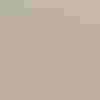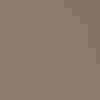
114th CBC Wyoming/Utah Regional Summary
By Keith Evans
For the 114th Christmas Bird Count, 20 count circles were reviewed for Wyoming and 24 for Utah. For some species, a year makes a big difference. Last year’s big news was the irruption of redpolls in the region. On CBC-113, 419 Common Redpolls were recorded on six count circles in Utah and 1960 were recorded on 17 circles in Wyoming. On CBC-114, no Common Redpolls were observed in Utah and only 11 on one circle were recorded in Wyoming. CBC-114 was a good count year, but produced no “big regional news” surprises. The single Streak-backed Oriole in St. George (UTSG) was probably the most “out of place” bird for the region. The weather during the count period was variable. The region experienced very cold temperatures during late November and early December, therefore much of the water was frozen and many of the species expected on mild winters had migrated south. Many counts experienced mild temperatures during the actual count day, but the previous weather influenced the outcomes. A couple of counts in Wyoming were scheduled for a day that happened to be a “blizzard” day, so greatly reduced their effort in both time and distance travelled and number of species recorded. I also pass along a “thumbs up” to the Salt Lake City team (UTSL) who involved 19 participants under the age of 19. It’s always good to involve the youth in these activities.
In Wyoming, 108 species were reported (compared to 130 species on CBC-113). As the species counts normally vary between 110 and 133, CBC-114 was a low count year for the state. This year, I was interested in some of the fruit-eating winter species. American Robin numbers in Wyoming have remained fairly constant during the last five years with an average of 1877 reported on 16 count circles. For CBC-114, 1542 American Robins were recorded on 17 circles. Cedar Waxwing numbers are highly variable with total numbers over the past seven years fluctuating between a low of 372 (CBC-114) and a high of 2117 (CBC-113). The 5-year average of 1221 on 10 circles is well above the 372 on nine circles counted during CBC-114. Bohemian Waxwing numbers have been less variable with a 5-year average of 2953 on seven counts compared to a CBC-114 number of 2507 on nine circles. The last “big” year for Bohemian Waxwings in Wyoming was beyond the 5-year average period when 9241 were counted on 16 circles on CBC-108. Evening Grosbeak numbers are another species with high variability. On CBC-111, 284 Evening Grosbeaks were observed on six circles, but only 20 were observed on two circles on CBC-112. For comparison, 159 were recorded on five circles on CBC-114 which compares to a 5-year average of 170 on four circles. On CBC-114, 184 Townsend’s Solitaires were observed on 17 circles; this compares to a 5-year average of 194 on 17 circles.
A lower number of Mountain Chickadees in my yard (in Utah) sparked an interest in the population trend of this species. I was pleased to determine that Mountain Chickadee populations in Wyoming seem to be stable. On CBC-114, 409 were observed on 14 circles; whereas, the 5-year average was 406 on 15 circles. The Greater Sage-Grouse is another favorite bird of mine and a species not recorded on many CBCs across the nation. On CBC-114, 365 individuals were counted on two circles in Wyoming. This compares to a 15-year average of 384.6 individuals on an average of 4.7 circles.
I found it interesting that 20 species (of the 108 total) were counted on only one circle. Some of the interesting “single count species” observed included an Osprey (WYCA), an American Three-toed Woodpecker (WYJH), a White-throated Sparrow (WYCA), a Rusty Blackbird (WYPD), and 14 Sandhill Cranes on WYRT.
In Utah, 194 species were reported on 24 count circles. This is another “high species” count for Utah. In recent years, total species varied from 180-189 until CBC-113 when 192 species were recorded, then this high of 194 species (CBC-114). This upward trend will be interesting to track. On most years, Utah has three counts that top the 100 species mark. CBC-113 was an exception with four counts exceeding the 100 species mark; however CBC-114 was again back to the level of three counts reaching or exceeding the 100 species mark. For additional analysis this year, I looked at some of the fruit-eating wintering species. As was the case in Wyoming, wintering American Robin populations have remained fairly stable (CBC-109-113) in Utah. CBC-114 was a banner year as 13,819 individuals were recorded on 22 count circles. This compares to the previous 5-year average of 8552 individuals on 23 circles. CBC-114 was also a good year for Cedar Waxwings although the count of 2519 on 17 circles was a little lower than the 2882 individuals on 15 circles on CBC-113. The 5-year average for Cedar Waxwings in Utah (CBC-109-113) was 1876 individuals on 15 circles. The last high count for Bohemian Waxwings in Utah was on CBC-108 when 3092 were recorded on six circles; the same count year as when 9241 were recorded in Wyoming. CBC-114 only recorded two individuals on two circles; similar to CBC-110 with zero and CBC-111 with three. This compares to the 5-year average of 168 on three circles, indicating how a couple of high years can influence the average. Evening Grosbeak numbers appeared to be increasing during the previous five years with numbers increasing from 22 (CBC-110) to 186 (CBC-113). However, only nine individuals were counted on two circles on CBC-114. Townsend’s Solitaire number remain fairly constant with a 5-year average of 202 individuals on 18 circles and a CBC-114 number of 212 on 17 circles.
As with Wyoming, the lower numbers of Mountain Chickadees in my yard (in northern Utah), sparked an interest in the CBC-114 numbers. The 5-year average was 167 on 14 circles, and the CBC-114 numbers were similar with 186 on 14 circles. Maybe I’m thinking back to the CBC-108 timeframe when 400 Mountain Chickadees were recorded on 18 circles. I recently read where Cooper’s Hawks were adapting well to some of the older “suburban” neighborhoods within the western large cities. As several of Utah’s CBC circles involve a medium to large city, I looked at some numbers from the past. Historical CBC data does indicate a long-term population increase. The 5-year average Cooper Hawk numbers for CBC-96 through CBC-100 was 32 on 10 circles (average birds per party hour was 0.036). Looking ahead to the 5-year average for CBC-109 through CBC-113 the numbers were 63 individuals on 16 circles and birds per party hour averaged 0.048. On CBC-114, 70 Cooper’s Hawks were counted on 15 circles (only CBC-110, with 78 individuals was higher). For the third year, Zion National Park (UTZI) recorded California Condors (two on CBC-114). I continue to mark these as recent introductions (RI), but with reproduction in the area this designation may be removed in the future.
I found it interesting that 43 species (out of a total of 194) were counted on only one count circle. Some of the interesting “single count species” include: a Blue-winged Teal (UTSL), 23 Sharp-tailed Grouse (UTLO), two Neotropic Cormorants (UTSR), a Red-shouldered Hawk (UTSR), a Mew Gull (UTSL), a Glaucous-winged Gull (UTLO), a Winter Wren (UTLO), a Rusty Blackbird (UTLO), and a Streak-backed Oriole (UTSG).
Get Audubon in Your Inbox
Let us send you the latest in bird and conservation news.




